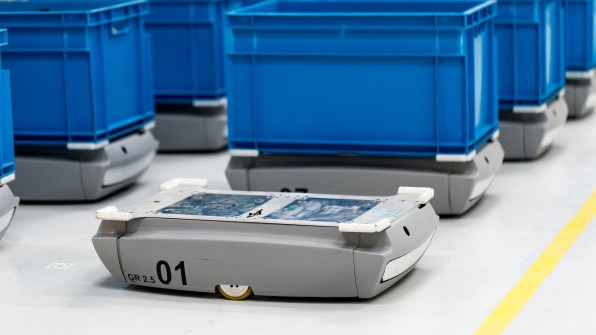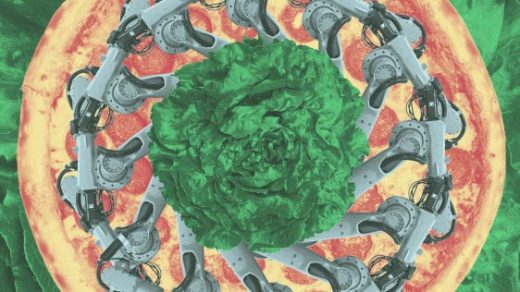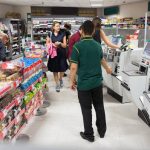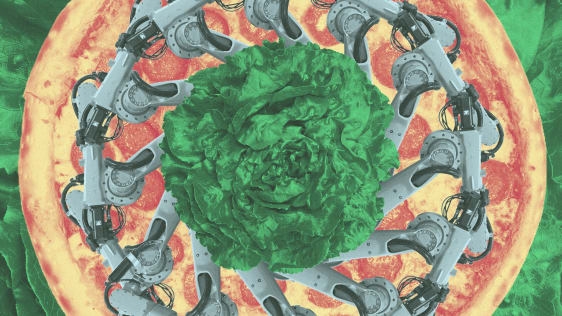Can These Robot-Run Warehouses Change The Landscape Of Urban Grocery Delivery?
It’s usually cheaper and faster to order pizza than to get a delivery of fresh ingredients from a grocery store. One startup thinks it can change that equation–and potentially also begin to make it a little more likely that people choose to eat healthier dinners.
“Imagine a world where it is cheaper to shop online than to go to the supermarket, and faster than if you were to go to the supermarket and go home,” says Elram Goren, CEO of CommonSense Robotics.
In the company’s system, small fulfillment centers near grocery stores will be tightly packed with products arranged in a 3-D cube of racks. In the design, various robots climb across the space picking up totes filled with products and bringing them to a human packer. Because it avoids sending someone to hunt down products in the aisles of a store, the system makes it possible to get a 20-item order from a service like Instacart ready in five minutes.

Typically, retailers use large, remote warehouses to make it more efficient to fulfill online orders. But because the robotic system can work in smaller spaces, the startup plans to build centers in urban neighborhoods, but not in places where high rents are making it hard to run a retail store. In an underground parking garage of its own office building in downtown Tel Aviv, the company is currently testing a prototype of its technology.
“We’re paying a fraction of the rent compared to [storefront on a main street], we’re using a lot less labor, and we’re doing it a lot faster,” Goren says. “It changes the economics of the situation, and that allows retailers to offer faster, cheaper delivery.”
Because of the tight profit margins on grocery sales, retailers currently often lose money on on-demand orders, even when customers pay a delivery fee. With the robotic fulfillment centers, delivery is cheaper both because the robots cut the cost of using humans to gather items for an order, and because the system is designed for central locations rather than more distant warehouses that would require more time for delivery drivers. But the system is also designed to compete with the cost of traditional grocery shopping. By maximizing the use of existing retail space and eliminating the need for warehouses, the company says it lowers operational costs in general, and those savings could be passed to consumers.
While the system can deliver anything you’d buy in a grocery store, the ability to easily get more affordable fresh food might help shift someone’s last-minute decision about what to eat for the next meal. “A lot of people probably can’t afford to eat healthier because it’s more costly,” he says. “It’s not necessarily common sense, but these trends of technologies that can allow for better or cheaper logistics are things that can allow more and more people to enjoy this type of proposition.”
The company plans to work with local grocery stores who struggle to compete with other online delivery services like Amazon Fresh. One micro warehouse could be shared by multiple smaller stores who don’t have the capital to afford an automated warehouse of their own, and who also couldn’t make the economics work in a manual facility. Each retailer would pay a small fee per on-demand order.
The support for smaller stores, and their produce sections, might also make healthier foods somewhat more accessible. “In groceries, you have a lot of economies of scale that are working to the benefit of extremely large players,” he says. “Usually, these players are not producing the healthiest of foods. The fact that you can lower the burden of cost on small players that do usually offer a healthier choice, allows them to be more relevant.”
The first center will open in Israel in 2018, likely followed by a center in the U.S., where CommonSense Robotics says it has received “substantial interest” from supermarkets. Twenty-three percent of Americans already buy food online, and 60% expect to spend a quarter of their food budgets online within a decade. Though online groceries only represent 4.3% of food and beverage sales in the U.S. now, that could grow to 20% by 2025.
Fast Company , Read Full Story
(14)














